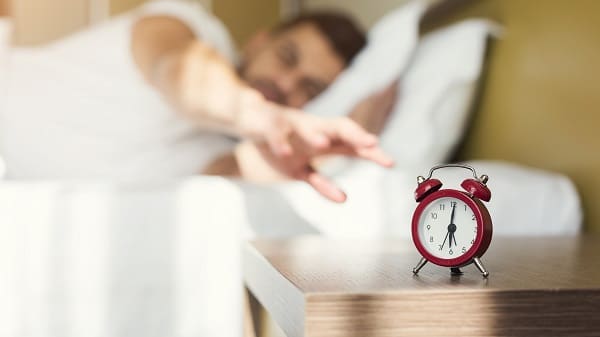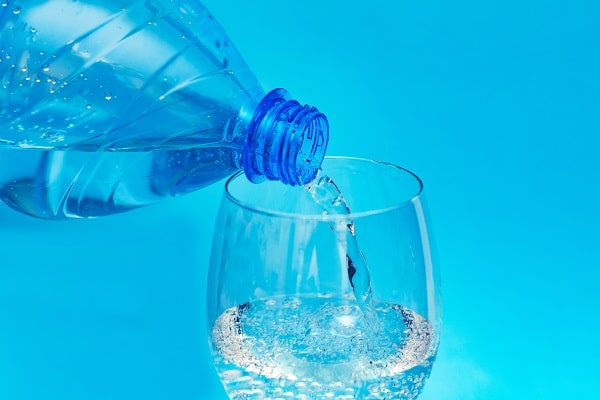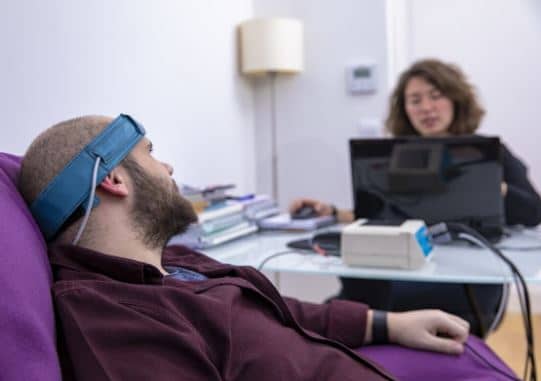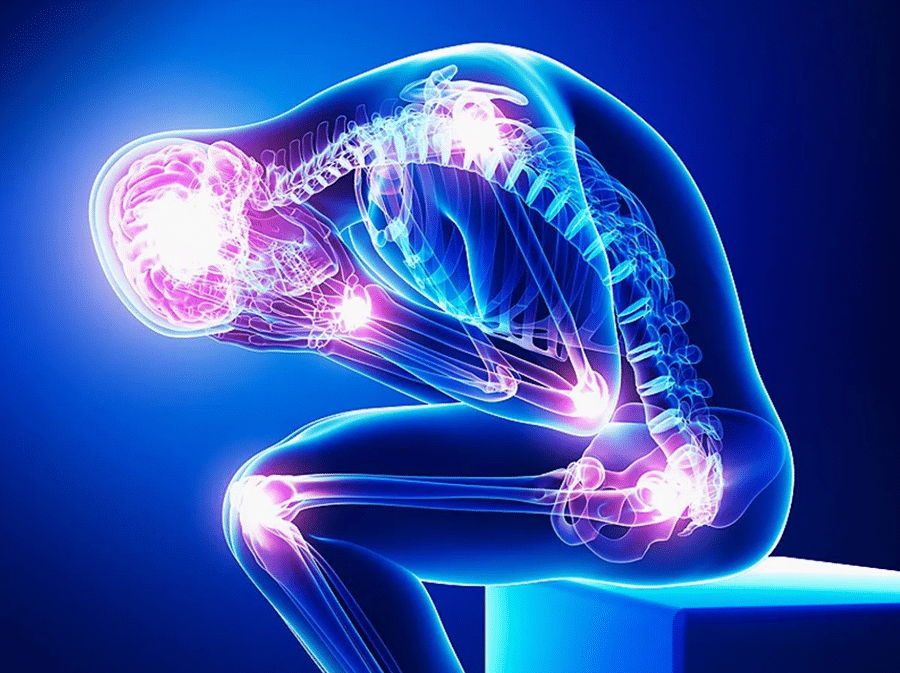According to the study conducted by the Migraine Research Foundation, migraines are one of the most commonly prevalent conditions in the world, and it runs majorly among adults and in families with children. A survey carried out by the same foundation says that nearly 12% of Americans suffer from migraines. A migraine is not just a persistent, severe headache as it goes way beyond that. It is a part of a neurological ailment often coupled with other migraine symptoms such as nausea, vomiting, and sensitivity to light and sound. It is a chronic condition hindering the daily life of the people facing it.
Specific preventative medications can prevent migraines, but the natural treatments are equally worth considering as they can significantly impact the overall health. In this particular write-up, we will focus on some of the best natural cures/remedies that can help you relieve migraine headaches.
Contents
Exercise Regularly

When you exercise, your body releases particular chemicals that restrict the pain signals from reaching the brain. Besides, these chemicals also help ease anxiety and depression, which can make migraines worse. In addition to that, obesity also enhances the risk of developing significant headache pain. Maintaining a healthy body weight through regular exercise can offer additional benefits other than relieving a migraine.
If your physician allows, choose any exercise that you enjoy the most. It could be swimming, walking, cycling, and other such impactful practices. However, remember to gradually ease into the routine, as highly vigorous exercises may prove to be migraine triggers.
Practice Meditation And Yoga

You can significantly benefit from the throbbing pain felt in your head by regularly practicing meditation or yoga. Both of these are some of the most impactful and easy-to-do relaxation techniques that can help you prevent migraines. Yoga improves the blood flow in the body and reduces muscle tension that relieves some significant symptoms experienced by the people who get migraines. Besides, meditation has its benefits too. Frequently occurring migraine attacks may be triggered by stress, tension, anxiety, etc. Relaxation techniques like meditation inhibit the nervous system’s specific region that causes stress and ultimately relieve headaches by easing the underlying stress.
Try Aromatherapy

Aromatherapy is a holistic, remedial treatment that utilizes natural plant extracts to improve health and well-being. It is also known as essential oil therapy as it makes use of aromatic essential oils in medicinal ways to enhance the body and mind’s health. A study conducted by European Neurology suggests that inhaling lavender essential oil helps lower migraine headaches. Besides, it is also helpful in relaxing stress, headache, and other types of headaches. Apart from that, you may additionally try using different essential oils such as Rosemary, Peppermint, Chamomile, and Eucalyptus as they also show promising results in treating migraines.
Fix Your Sleep Schedule

Multiple scientific studies suggest that there is a strong connection between lack of sleep and migraine pain. Often, migraines get triggered by low sleep quality or an irregular/insufficient sleep schedule. To prevent migraines, establish a regular sleep pattern so that you sleep for at least 7 hours at night. If you are habitual to daytime naps, keep them as short as 20 to 30 minutes so that you do not wake up with a headache. However, sometimes falling asleep while having a headache can be quite challenging. During these times, try to minimize all the possible distractions before sleeping, such as watching TV. Avoid the consumption of caffeine, nicotine, or alcohol as these components severely interfere with your sleep cycle.
Eat Healthier

What you eat plays a significant role in your migraine conditions, and therefore, it is of utmost importance to maintain a nutritionally sound diet. Consume a sufficient amount of fruits and vegetables and avoid triggering food items such as aged cheese or processed meat. Along with eating healthy food, it is also essential to eat consistently. Ensure that you are eating at the right time every day, and do not skip meals at any cost. Skipping meals or fasting can majorly increase the risk of migraine attacks. Other than that, you may also consider maintaining a food journal to keep track of what you eat and which food items trigger a headache so that you can develop a better understanding of your body and mind.
Manage Stress

Stress is one of the most common triggers leading to a migraine. Stress can also worsen a pre-existing migraine, creating a vicious cycle that gets almost intolerable after a point. Therefore, if you are prone to migraine headaches, keep stress away from you at all times. For this, you should look for outlets for releasing tension in the form of calming practices like journaling, leisure activities like painting, music, dance, etc. You may also consider taking an occasional break from your routine, especially when you feel overwhelmed or are experiencing burnout. Try to simplify and organize your thoughts and actions as much as you can. Avoid squeezing too many tasks within a short period to prevent unnecessary stress.
Drink Enough Water

Not drinking plenty of water is a leading cause of developing a migraine; besides, it takes minor dehydration to cause a regular headache. People who face a persistent dehydration problem may consider the consumption of oral rehydration to make up for the missing electrolytes in the body, provided your doctor agrees to it. A study has shown that people who added 1.5 liters of water to the amount they usually used to drink experienced fewer headaches after that. In addition to that, the pain they felt while facing a headache was also significantly lower than before. Water is an oxidizing agent that ensures proper supply to the blood vessels in all parts of the body, ultimately reducing the risk of developing pain in any body part.
Try Acupuncture

A comprehensive and systematic study conducted in 2012 evaluated the effectiveness of acupuncture to treat migraines and other similar conditions. The authors of this study discovered that acupuncture is a practical treatment choice for people who experience frequent migraine headaches. However, additional factors may be playing a part as well. Those interested in practicing acupuncture for migraines should ensure that they find a licensed practitioner for the treatment. In this process, the needle stimulates the nerves for releasing hormones like endorphins, triggering an effective response in your body. Such stimulation of the immune and circulation system promotes a relief in migraines and other tension headaches.
Consume Herbal Supplements

Certain herbal supplements like Butterbur and Feverfew have proven helpful in reducing migraine pain up to a considerable extent. According to the American Migraine Foundation, a regular dose of 150 mg of Butterbur will help you lower the frequency of migraines if taken for three months. The association suggests that Feverfew is relatively less effective as compared to Butterbur. Feverfew may still be suitable for some people. However, it is essential to realize that there are some risks or side effects of using these herbs. These side effects may be too severe in exceptional cases, which is why anyone wishing to try such herbal supplements should ensure that their doctor approves of it considering their condition.
Practice Compression Therapy

Sometimes, people prefer setting either a cold or warm compress on their head as they find it quite soothing and aid in reducing the migraine pain.
Many people experiencing migraines usually proclaim a cold compress preference, but warm or cold, any of them can work. However, know that there are some side effects of practicing this therapy. In addition to that, people dealing with specific circulatory problems, diabetes, or skin ailments should preferably avoid extreme temperatures. It suggests that even known compression therapy may prove to reduce migraine pain. Still, you should always speak to your doctor before trying it out and do it only when you get a green signal from a trained medical professional.
Biofeedback Therapy

Biofeedback is a type of therapy that people generally use to trigger a sense of release and relaxation of their bodies’ tighter muscles.
Such intensive therapy demands a substantial amount of practice and training. For this, you place sensors on the specific muscles fed in a small device that delivers real-time feedback about the muscle tension felt in the body. It allows users to release tight areas excellently. These sensors are placed near the forehead, jawline, or even trapezius muscles within the shoulders, targeting the tighter muscles and ultimately helping relieve migraine pain.
Conclusion
In a nutshell, living with migraines is quite frustrating and pretty much a daily challenge, but by making healthy lifestyle choices, you can control the pain up to a great extent. Approach your friends, family, and loved ones for support and assistance to deal with the condition, as it is not just physically challenging but also mentally draining. If, at any point, you feel anxious, depressed, or generally uncomfortable, please consider registering for a support group or seeking therapy. Always believe in your capability to take control of the pain experienced by you.


